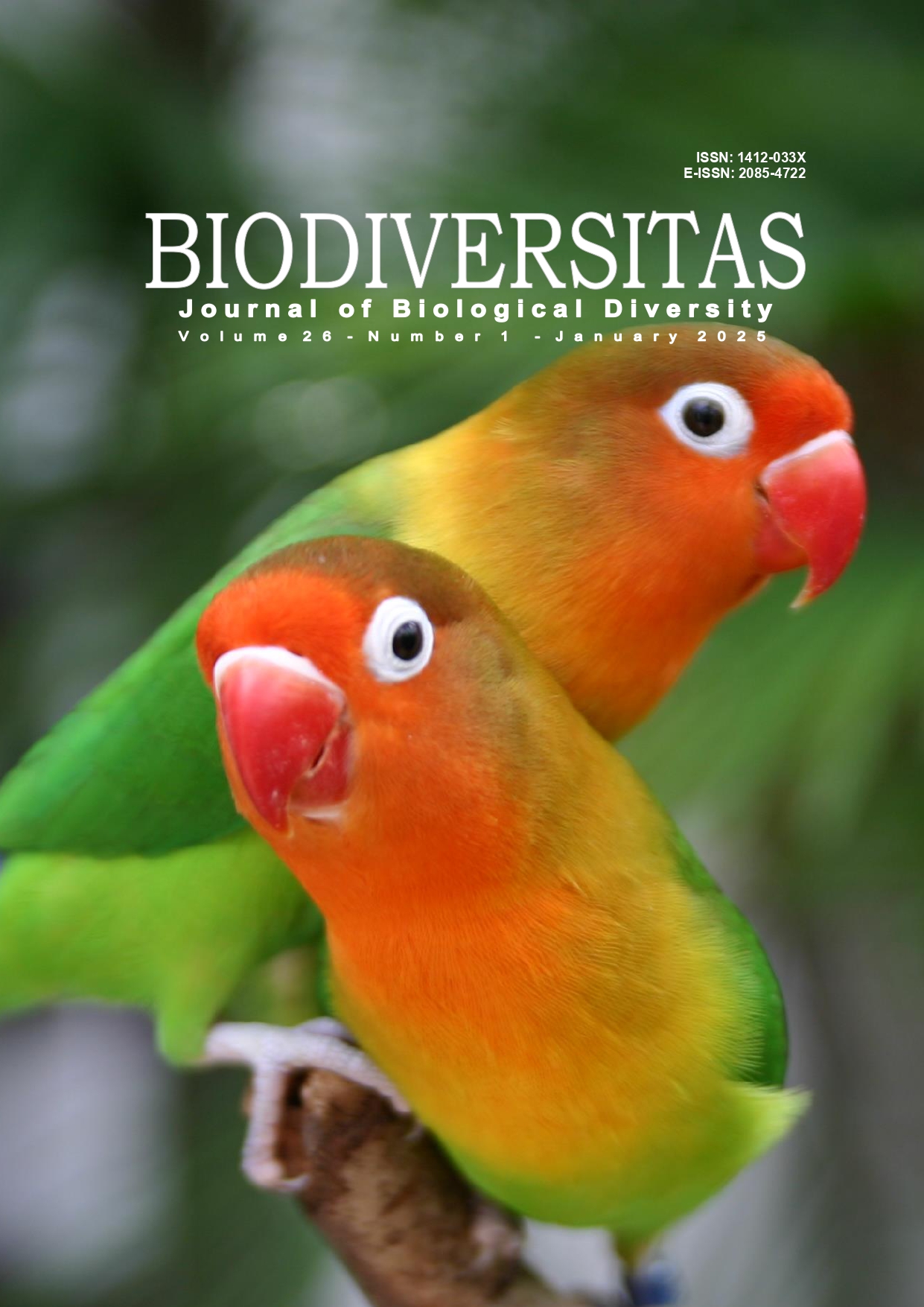Identification and production of indole-3-acetic acid by bacteria isolated from eco-enzymes
##plugins.themes.bootstrap3.article.main##
Abstract
Abstract. Meitiniarti VI, Kasmiyati S, Nugroho RA, Krave AS. 2025. Identification and production of indole-3-acetic acid by bacteria isolated from eco-enzymes. Biodiversitas 26: 111-117. Phytohormone-producing microorganisms are an essential component of biofertilizers. One example of a phytohormone is Indole Acetic Acid (IAA). IAA-producing microorganisms can be originated from various habitats. In this study, IAA-producing bacteria will be isolated from eco-enzyme, a liquid-fermented organic material rich in benefits and contains numerous microorganisms and IAA. The research involves processes of isolation, detection of cell and IAA production, and molecular identification. Through the processes of isolation and purification, 14 bacterial isolates were obtained. After testing their ability to produce IAA using a medium containing L-tryptophan and Salkowski's reagent, only 11 isolates were found to produce IAA. The DNA of these 11 isolates was isolated, amplified, sequenced, and identified through molecular analysis. The nucleotide sequences of these 11 bacterial isolates have been registered in the gene bank and assigned accession numbers PQ095569 to PQ095579. Based on alignment and phylogenetic tree analysis, the 11 isolates were grouped into three categories: the Bacillus group, consisting of Bacillus altitudinis, Bacillus subtilis, Bacillus licheniformis, Priestia megaterium, and Paenibacillus sp.; lactic acid bacteria, including Lacticaseibacillus paracasei and Lactiplantibacillus plantarum; and vibrio-shaped bacteria, including Vibrio sp. and Vibrio diazotrophicus. The Bacillus group (including Paenibacillus megaterium) could produce high levels of IAA. However, among the members of this group, P. megaterium exhibited the highest cell production capability and IAA production, with values of 2982.208 mg·L?¹ and 35.49 mg·L?¹, respectively. This high growth ability and IAA production make P. megaterium a promising candidate as an inoculum for use as a PGPR (Plant Growth-Promoting Rhizobacterium).


 https://orcid.org/0000-0002-6636-8743
https://orcid.org/0000-0002-6636-8743